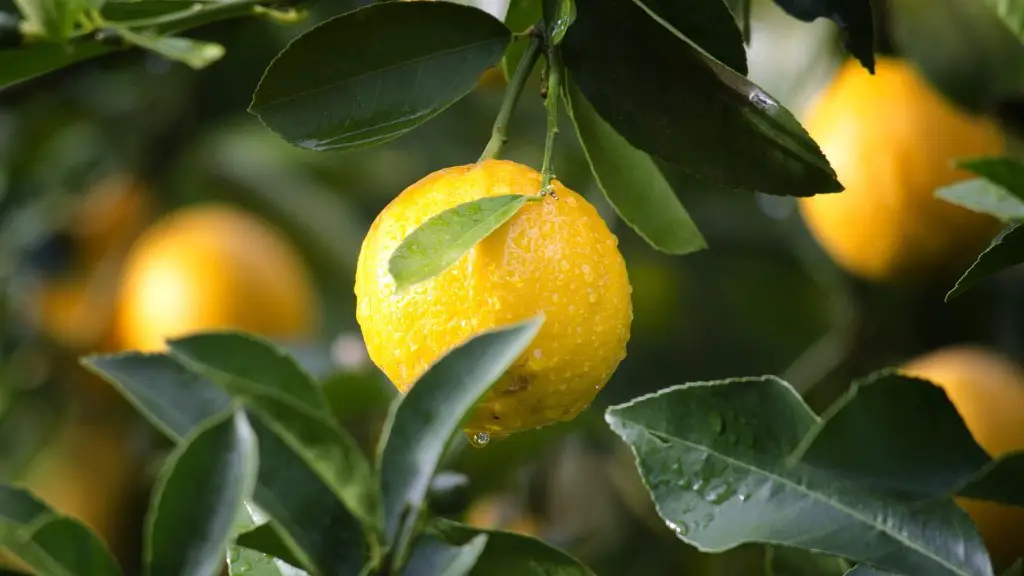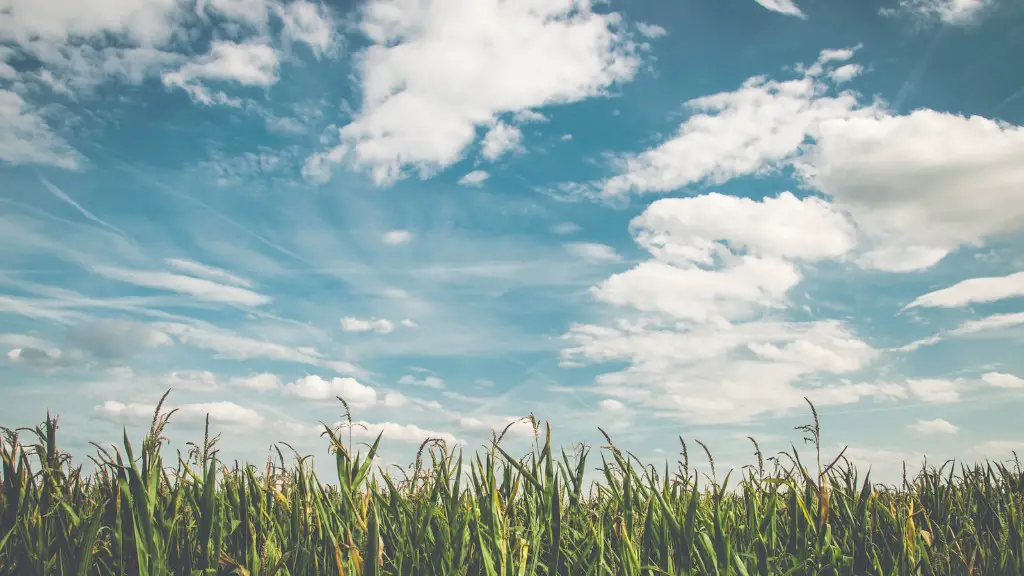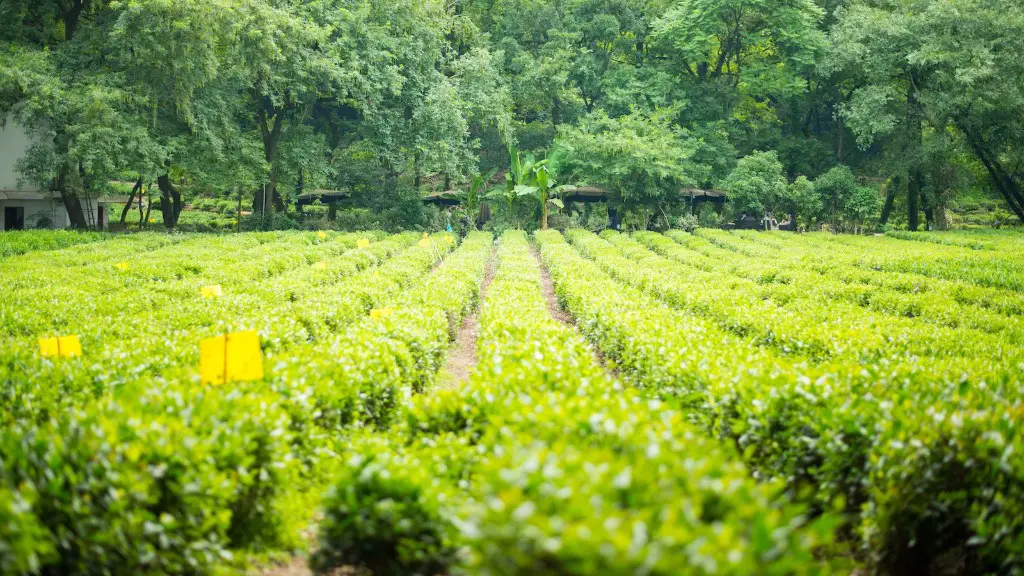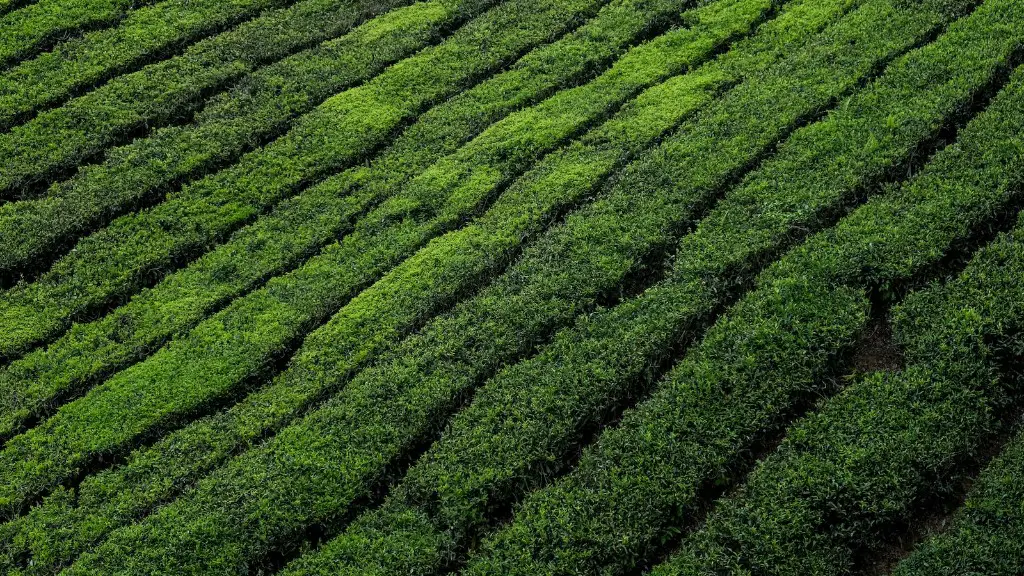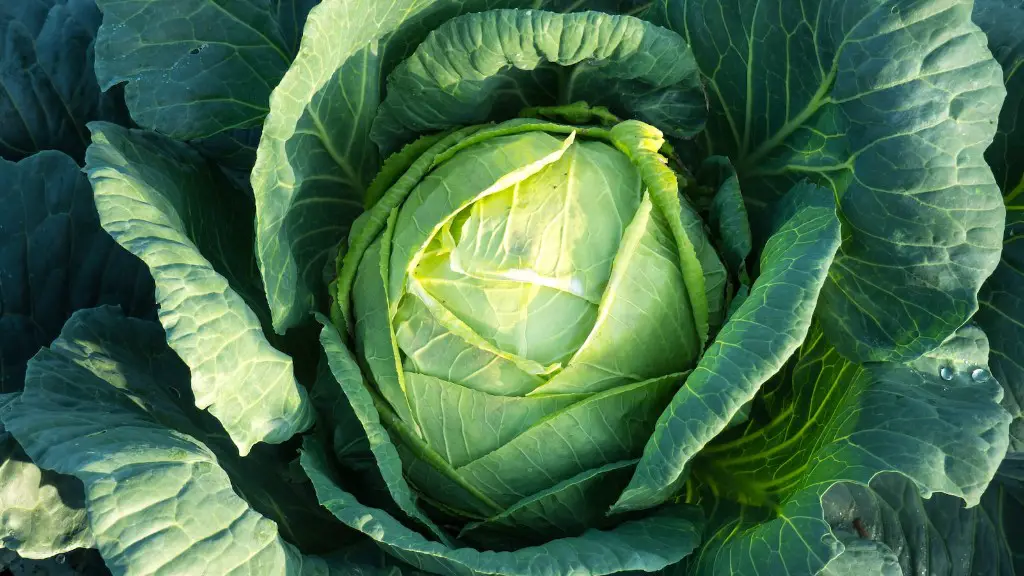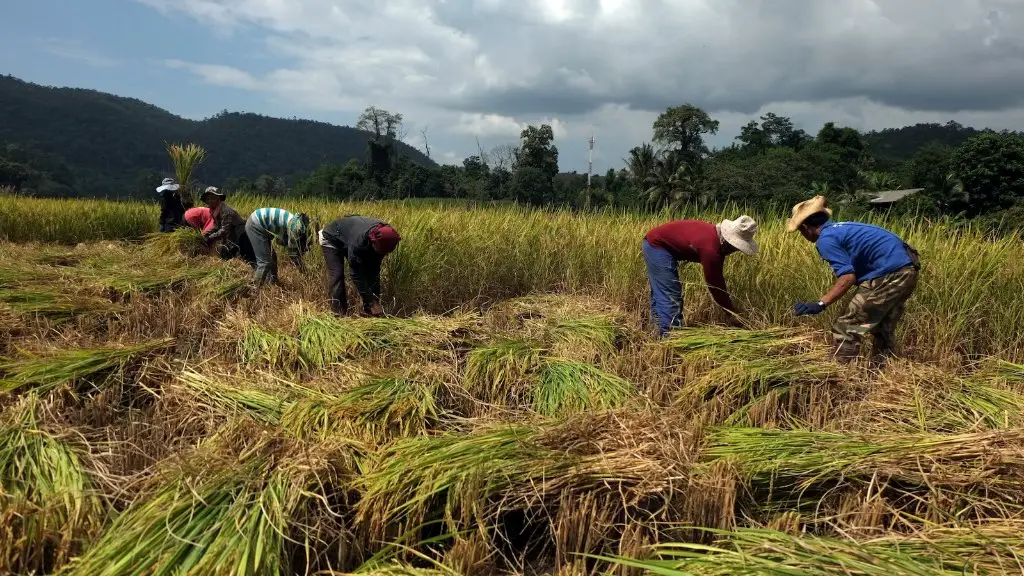The practice of sustainability agriculture is based on an understanding of ecosystem services and the idea of caring for the land. It is the application of ecological principles to the design and management of agricultural systems with the goal of creating more sustainable outcomes.
Sustainable agriculture is the practice of producing food, fiber, or other crops in a way that protects and improves the natural resources of the land, reduces pollution, and safeguards the health and welfare of workers, their families, and communities.
What does sustainability mean in agriculture?
Sustainable agriculture is a type of farming that is done in order to protect the environment. This type of farming helps to conserve water and soil, and it also helps to reduce pollution. Sustainable agriculture is also a type of farming that helps to expand natural resources, such as by planting trees and shrubs.
Agroforestry is a type of land management that involves the intentional incorporation of trees or shrubs into agricultural operations. By mixing trees or shrubs into their operations, farmers can provide shade and shelter that protect plants, animals, and water resources, while also potentially offering additional income from fruit or nut crops.
Adopting agroforestry practices can have numerous benefits for farmers and the environment. Trees and shrubs can help improve soil health by providing organic matter and increasing water infiltration and retention. They can also help reduce erosion, lower temperatures, and provide habitat for wildlife. In addition, agroforestry can help diversify farm incomes and provide opportunities for value-added products.
While agroforestry practices can offer many benefits, there are also some challenges that need to be considered. Incorporating trees into farming operations can require changes in equipment and management practices, and there may be some initial costs associated with establishing an agroforestry system. In addition, trees can compete with crops for water and nutrients, and they can also harbour pests and diseases.
Despite these challenges, agroforestry offers an promising way for farmers to improve their operations and the environment. By carefully planning and selecting the right trees and shrubs
What are the 3 main components of sustainable agriculture
Sustainable agriculture is a term that is used to describe a variety of different farming practices. There is no one single definition of sustainable agriculture, but there are a few common themes and principles that are often mentioned when discussing this topic.
The three main goals of sustainable agriculture are environmental health, economic profitability, and social equity. A variety of different philosophies, policies, and practices can contribute to these goals, but some of the most common ones include using natural resources in a more sustainable way, promoting biodiversity, and working to improve the welfare of farm workers.
Sustainable agriculture is an important topic of discussion in today’s world. With the current state of the environment, it is essential that we find ways to produce food that are not harmful to the planet. Sustainable agriculture can help us to do this, and it is important that we continue to learn more about it and how we can implement it in our own lives.
Sustainable farming is a term that is used to describe agricultural practices that are used to protect the environment and conserve natural resources. Sustainable farming practices help to preserve the land and water resources that are necessary for farming, while also minimizing the impact of farming on the climate.
How important is sustainability in agriculture?
Sustainable farming methods are not only important for protecting biodiversity and the environment, but also for fostering growth and maintaining healthy ecosystems. Sustainable farming integrates whole systems and landscapes as part of the farm, which supports biodiversity. This includes using a variety of methods to manage the land, such as planting native species, using natural pest control, and rotating crops. By using these methods, farmers can help to create and maintain healthy ecosystems that provide a variety of benefits for both the environment and the people that live in it.
Sustainable agriculture is important for preserving the earth’s natural resources, as well as for benefiting the environment in other ways. Sustainable agriculture helps to maintain soil quality, reduce erosion, and preserve water. All of these things are important for keeping the earth healthy and habitable for future generations.
What are the four types of sustainable agriculture?
Elements of sustainable agriculture are those practices that help farmers to protect and improve the natural resources they rely on, while also producing a good crop. They can include things like permaculture, agroforestry, mixed farming, multiple cropping, and crop rotation. Each of these practices helps to conserve soil, water, and other resources, and can make farming more efficient and more resilient to environmental stresses.
Sustainable agriculture is an approach to food production that seeks to minimize the negative environmental impact of farming while still providing for the needs of the people who rely on agriculture for their livelihoods. There are many different sustainable agriculture methods and farming practices, but some of the most common include permaculture, biodynamic farming, hydroponics and aquaponics, urban agriculture, and agroforestry. Each of these methods has its own advantages and disadvantages, but all share the goal of producing food in a way that is environmentally sustainable.
How can agriculture become more sustainable
Farmers play a critical role in protecting our environment. By adopting conservation practices, they can build rich, fertile soils that will grow robust crops while protecting water sources, storing carbon, reducing greenhouse gas emissions and creating fields that are more resilient to extreme weather events. By working together, we can help make our planet a healthier, more sustainable place for all.
Sustainable farming practices are those that are environmentally responsible and help to preserve natural resources. With the world’s population continuing to grow, the demand for food is also increasing. This creates challenges for sustainable farmers in terms of being able to produce enough food to meet the demand. Additionally, water scarcity, loss of usable land, and high energy use are all challenges that sustainable farmers face. Climate change is another major challenge that sustainable farmers must contend with. The cost-efficiency of sustainable practices is also a key concern. Ensuring that sustainable farming practices are affordable and accessible is critical to their success.
What is sustainable agriculture called?
Sustainable agriculture is an important part of ensuring that we can meet the needs of growing human populations while also taking care of our environment. It involves producing food and livestock over the long term with minimal negative effects on the environment. This includes working to protect and restore natural resources, promoting ecological balance, and reducing waste and pollution.
The key challenges facing the agricultural sector are:
– The current trajectory of growth in agricultural production is unsustainable because of its negative impacts on natural resources and the environment
– One-third of farm land is degraded, up to 75 percent of crop genetic diversity has been lost and 22 percent of animal breeds are at risk.
– Agricultural production needs to become more efficient and sustainable in order to meet the needs of a growing global population.
– There is a need to develop innovative approaches to address the challenges of climate change, water scarcity and soil degradation.
– There is a need to increase investments in research and development in order to promote innovation and accelerate the transition to sustainable agricultural practices.
What are the main concepts of sustainable agriculture
Sustainability as a concept encompasses three key elements; economy, environment and society. An example of a sustainable agricultural system would be a profitable system with little or no impact on the environment and one which has a social licence.
The term sustainability is often used to mean different things to different people. However, the United Nations Brundtland Commission defined it as “meeting the needs of the present generation without compromising the ability of future generations to meet their own needs.” In other words, sustainability is about meeting our current needs without damaging the planet or jeopardizing the ability of future generations to meet their own needs.
The United Nations’ Sustainable Development Goals (SDGs) provide a framework for achieving sustainability. The SDGs are a set of 17 goals that cover a broad range of sustainable development topics, including poverty, hunger, health, education, gender equality, water, sanitation, energy, climate change, and peace and justice.
The report sets out five key principles that balance the social, economic and environmental dimensions of sustainability:
1) Improving efficiency in the use of resources
2) Conserving, protecting and enhancing natural ecosystems
3) Protecting and improving rural livelihoods and social well-being
4) Enhancing the resilience of communities to disasters and climate change
5) Promoting sustainable consumption and production patterns
What are 3 benefits of sustainable agriculture?
There are many ways to increase profitable farm incomes while promoting environmental stewardship and enhancing quality of lives for farm families and communities. One way to do this is by increasing production for human food and fiber needs. This can be done by increasing yields, improving quality, or developing new markets for products. Another way to increase farm profitability is by reducing input costs. This can be done by developing more efficient production practices, using alternative inputs, or negotiating better prices for inputs. Finally, farm businesses can increase profits by diversifying their operations to include value-added products or services. By diversifying, farm businesses can reduce their reliance on a single commodity or market, and spread their risks across multiple sources of income.
1. Permaculture:
Permaculture is a system of agriculture that utilizes natural ecosystems to grow food and other crops. This method of farming is environmentally friendly and sustainable, as it does not damage or disturb natural ecosystems.
2. Aquaponics & Hydroponics:
Aquaponics and hydroponics are methods of growing plants without soil. These methods use nutrient-rich water instead of soil, which is more efficient and environmentally friendly.
3. Using Renewable Energy Resources:
Farms can use renewable energy resources, such as solar and wind power, to run their operations. This is not only environmentally friendly, but also sustainable in the long-term.
4. Crop Rotation & Polycultures:
Crop rotation and polycultures are two sustainable farming practices that help to improve soil health and increase crop yields. Crop rotation involves growing different crops in different areas of the farm each year, while polycultures involve growing multiple crops together.
5. Trees Can Increase Crop Yields:
Trees can provide shade, windbreaks, and other benefits that help to improve crop yields. They also help to improve air and water quality, and can
Final Words
Sustainable agriculture is an approach to food production that emphasizes the use of environmentally sound practices. Sustainable agriculture encompasses a wide range of approaches, from small-scale, organic farms to large-scale, commercial operations. The goal of sustainable agriculture is to produce food in a way that is environmentally sustainable, economically viable, and socially just.
Sustainability agriculture is a type of agriculture that focuses on producing food in a way that is environmentally sustainable. This means using practices that protect and conserve natural resources, while still being productive and efficient.
